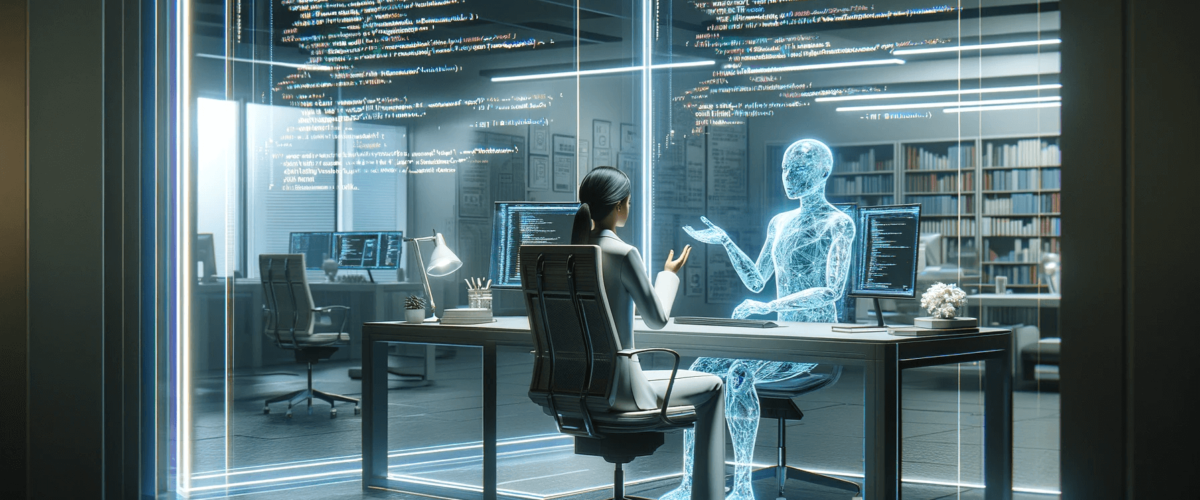The future of IDEs in Programming
The landscape of programming is undergoing changes, driven by advancements in AI and machine learning. Traditional programming might not become obsolete, but the role of the software developer is certainly changing. In the near future, we expect to see the emergence of AI-powered Integrated Development Environments (IDEs) that are more than just code completion/suggestion tools like we see today.
Rather than writing lines of code, developers will soon be guiding intelligent systems to build software. This article will explore how these next-generation IDEs could look and the implications they could possibly have for the programming profession.
Development Tools
While AI tools and especially ChatGPT is streamlined into our everyday work already, it is interesting to think of a perfect AI powered tool for creating software. Imagine an integrated development environment (IDE) that not only suggests snippets of code like Copilot or Replit today, but actively participates in the software creation process.
This IDE would serve as a comprehensive assistant, understanding the whole project and codebase. It can offer intelligent insight about every aspect of the project. Let’s explore what such a tool might look like and how would it transform the role of a software developer.
Envisioning the Ultimate IDE
The core of the AI powered IDE will be it’s interaction model. It’ll be a paradigm shift from conventional programming to a more collaborative and intuitive approach. It’ll include the following components:
- Conversational interface: developers will begin by conversing with the IDE in natural language, similarly as we speak to AI today. They’ll describe the features and functionality they desire for the application. This conversation could be as a high level brainstorming session about the software or a detailed functional specifications of each part of the software. The AI will ask further questions to make sure it understands the project before proceeding.
- Visual input: Developers are not only limited to text based interactions. IDE can read visual input such as UI Wireframes, finalized designs, database schema images or any other visual documents and translate these to functional code structures.
- Real-time Code Generation: As developers feed information to the IDE, it will begin to generate code in real-time. This code won’t just be a rough draft but a refined human-like codebase reflecting best practices and preferred coding styles of the software team. If the IDE comes to a complex part of the program, or instructions are not clear enough, the developer can take a hands-on approach and can help write parts of the software himself.
Over time such IDE will learn from the interactions and feedback from development team. It’ll adapt to the coding style and architectural patterns that are favored by them.
Throughout the development process, the IDE will continuosly validate the evolving codebase against requirements and objectives.
As it understands the entire project scope and it’s history, it can preemtively detect potential conflicts and errors. This in turn eliminates the need for unit tests.
Changing role of the developer
Through this IDE, the role of the developer will change drastically. Developers will focus on proper prompting and creative problem solving rather than engaging in code-level tasks as they do today. The focus of a developers job will move away from manual coding to managing the conversation with AI, making sure it fully understands the nuances of the software. In essence programmers will become AI-whisperers — experts in communicating with artificial intelligence to bring complex software visions to life.
I’m sure that my idea of such futuristic IDE is not unique to my imagination and even now, beta versions are likely being tested in various corners of the tech world. As someone deeply involved in software development, I am eager to integrate such a tool into my workflow and experience it firsthand.


